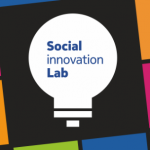 At the back end of last year I wrote about the rise of innovation labs around the world. They are designed to bring together a diverse group of people and opinions to try and tackle some of the more challenging and complex problems we face. They tend to do this via the creation of prototype solutions that are tested in the real world, before then being continuously improved.
At the back end of last year I wrote about the rise of innovation labs around the world. They are designed to bring together a diverse group of people and opinions to try and tackle some of the more challenging and complex problems we face. They tend to do this via the creation of prototype solutions that are tested in the real world, before then being continuously improved.
Each lab tries to take a systemic approach to the task, going beyond looking at symptoms and parts to try and get to the root cause of why things are currently not working.
A recent paper has set out to explore this landscape further. The paper forms the introduction to a larger piece of work that is setting out to explore just what innovation labs are and how they differ from more traditional forms of innovation (and indeed open innovation).
The paper identifies innovation labs as ambitious projects that set out to offer groundbreaking solutions via sources of unusual collaborators.
Common characteristics of an innovation lab
The report identifies a number of traits that seem common amongst innovation labs:
- Imposed innovation topic – so rather than allowing innovations to emerge naturally, innovation labs tend to have a clear topic that they wish to address upon their formation
- Large scale challenges – the labs tend to focus on large and challenging topics rather than smaller or more iterative ones
- Revolution rather than evolution – this is typified in the desire to revolutionize the field they’re exploring. The labs aren’t really interested in gradual change
- Autonomous setup – the labs are generally standalone entities. Whilst many might have sponsorship from various organizations, they seldom sit within any
- Diverse participation – the broad aim of each lab is to engage a wide range of participants to encourage heterogeneous participation
- Collaborative – the labs have a strong collaborative ethos to them in order to uncover the best solutions possible
- Long-term perspective – the labs certainly aren’t short-term in their outlook, which is just as well given the ambitious plans many have
- A diverse set of tools – the labs generally employ as many approaches and methodologies as is required to get results. Whether that’s prototyping, design thinking, crowdsourcing or RCTs, the labs are open to using whatever it takes
- Going beyond ideation – the purpose of the labs is to create solutions. Therefore, they’re not there just to create ideas, but to be active throughout the innovation process
The paper goes on to suggest that whilst the open aspect of the labs in the ideation phase resembles that of traditional open innovation, what happens after that is generally somewhat richer and more complex, and is arguably more akin to co-creation than traditional open innovation. The aim is very much to open up the entire innovation process rather than just the front-end aspect of it.
If you haven’t come across innovation labs before then this is a decent introduction to them, and the follow up work of the research team should be worth keeping an eye out for.